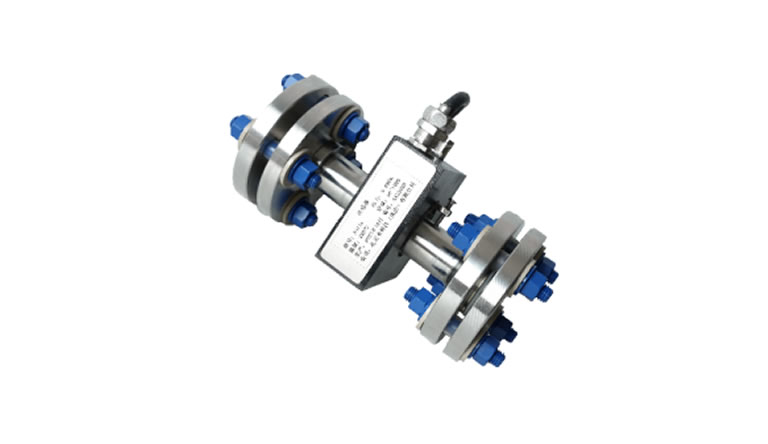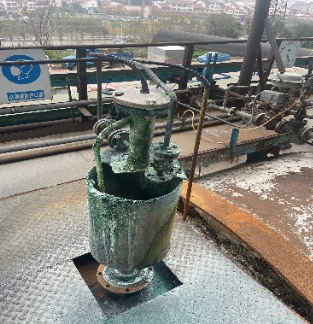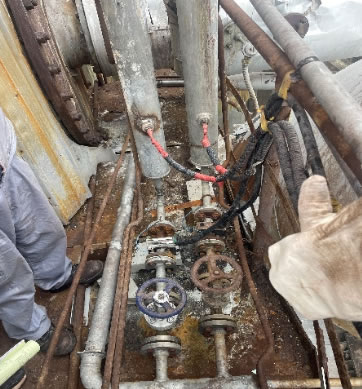- High temperature acid concentration meter measurement failure analysis
1. Introduction
Acid concentration is one of the key indicator parameters in sulfuric acid process, and the accuracy of its measurement is related to the operation safety of the device, the exhaust acid fog emission, equipment corrosion, automatic control, safety interlocking, etc. Therefore, a stable and accurate acid concentration value is essential to ensure the safety, stability, length, fullness and excellence of the sulfuric acid plant.
2. Principle description
The measurement principle of the high temperature acid concentration meter: there are two coils in the sensor, namely the sending ring and the receiving ring. When the sulfuric acid with a certain flow rate passes through the sensor, the sending ring generates an electromagnetic field because of the electricity, and the sulfuric acid through the sending ring generates an induced current due to the electromagnetic field. When the sulfuric acid carrying the induced current flows through the receiving ring, the receiving ring receives the electromagnetic generated by the sulfuric acid with the induced current, and further converts it into the induced current signal, which is imported by the wire into the instrument and presented on the display screen of the acid concentration instrument after processing by the analyzer.
To further understand the calculation of conductivity, the following formula is introduced:
![]()

Figure 1.1 AS118 Non-contact Conductivity sensor
Where K is the conductivity, Q is the conductivity cell constant, G is the conductivity, L is the distance between the two poles, A is the effective plate area of the two stages, I is the measured current, and E is the voltage.
Simultaneous triple can be obtained
![]()
It is easy to know from ④ that when the two-stage distance L, voltage E, and effective plate area A are constant, the conductivity K is positively correlated with the current I.
In summary, the measured value of conductivity is generally affected by temperature, doping degree, flow rate and flow rate, electrode damage, cable aging, etc., and I will mainly analyze it from the three aspects of temperature, doping degree, flow rate and flow rate.
3. Cause analysis
Temperature effect:
In the sulfuric acid process, the temperature control of each process is extremely strict. Boilers, heat exchangers, economizers and superheaters, etc. act as temperature regulators, and the concept of waste heat recovery associated with the above equipment is introduced. If the heat exchange performance of the local equipment for waste heat recovery decreases, the process temperature will rise or fall correspondingly from the local to the whole, which will affect the electrolysis degree of sulfuric acid, and the electrolysis degree of sulfuric acid will increase with the increase of temperature, that is, the electrical conductivity will rise with the increase of temperature, as shown in Figure 3.1.

Figure 3.1 Relationship between 98% acid conductivity and temperature
Doping degree influence:
The degree of doping in this paper does not consider the ash, but the bubbles generated by the integration of sulfuric acid into the air, and sulfuric acid containing a large number of bubbles will affect the measurement of electrical conductivity. The presence of bubbles will lead to high output acid concentration, because in the actual measurement, the accumulation of bubbles in a certain period of time will make the resistance infinite. The conductivity K deduced above is positively correlated with the current I. When the resistance is infinite, the voltage will not change, and the current will be infinitely small, thus making the output acid concentration high. Therefore, when measuring the conductivity of sulfuric acid, it is necessary to ensure that there is no large number of bubbles in it to ensure the accuracy of the measurement results. See Figure 3.2

Figure 3.2 Mapping of acid concentration %- conductivity S/m
Velocity and flow impact:
When sulfuric acid flows through the sensor, if the flow rate and flow rate are uncertain, and there is no corresponding buffer and quantitative equipment to make the sulfuric acid flowing through the sensor in a stable state in real time, the data acquisition of the sensor will be affected to a certain extent, which will lead to the curve fluctuation of the acid concentration analyzer and the measurement is inaccurate. When the flow rate is too low, it will cause “ Process delay ” Phenomenon; When the flow rate is too fast, there is an impact pressure on the conductive electrode, which causes “ Cavitation effect ” Long-term use will affect electrode sensitivity and service life; The appropriate flow rate and flow rate not only reduce the generation of bubbles, but also ensure the accuracy of acid concentration meter measurement.
4. Summary
When solving the measurement failure of the high temperature acid concentration instrument, our concern should be more about the sulfuric acid to be measured, and the first thing that is most needed is to check the temperature, doping degree and flow rate and flow rate. And the common causes of equipment aging, electrode sensitivity decline, circuit damage and other common reasons, the following points are common long-term use may lead to acid concentration meter measurement failure causes and solutions:
① The sensor is damaged due to acid corrosion. See Figure 4.1 and Figure 4.2 below.

Figure 4.1

Figure 4.2
② Cables, circuits and equipment are aged or damaged. It can be replaced directly. If the cable is not obviously damaged after inspection, consider internal line maintenance.
③ Correct data setting errors. The calibration reference data in the acid concentration meter is incorrectly set and needs to be reset.
④ The built-in temperature sensor is aging or damaged. Generally, the acid concentration meter will have a built-in temperature sensor to compensate or adjust the temperature, if the temperature sensor is damaged, it will also lead to the measurement failure of the acid concentration meter.


